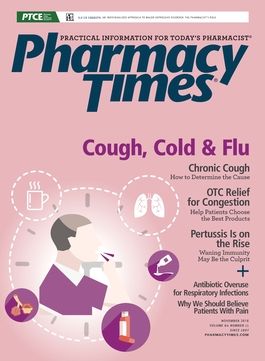Publication
Article
Pharmacy Times
Probiotics: What Do Patients Need to Know About Selecting a Product?
Author(s):
With an ample selection of probiotics, patients may be overwhelmed when choosing a product.
With an ample selection of probiotics, patients may be overwhelmed when choosing a product. Patients often rely on pharmacists for information about probiotics because they purchased OTC products and not all are created equal, according to a Pharmacy Times® Perfect Consult.
Pharmacists can inform patients about the different kinds of probiotics and their uses, as the manufacturers do not put much information on the label, the host of the online exchange said. “Because probiotics are over-the-counter, and do not require a prescription, pharmacists are in a unique position to help patients navigate the multitude of products available,” he said.
“Probiotics are regulated as vitamins and food, rather than as medication, so manufacturers can’t put much information on the product label about potential uses. This means that patients will be relying solely on pharmacists, and other health care providers, for good and accurate information,” the host said.
When asked if everyone should be taking probiotics, he said that supplements with the same active ingredients can provide different results for different patients. “Unlike vitamins, scientists haven’t decided if probiotics are beneficial for everybody, but they may benefit a lot of different patients for a lot of different things. They help with oral health, vaginal health; they can help with digestion, diarrhea, even allergic conditions,” the host said.
Probiotics contain different strains of bacteria, and the benefits from active ingredients may vary among patients. The host of the Perfect Consult discussed some of the most common strains and how pharmacists can help patients find which strain works for them.
“The 3 most common probiotics are strains of Lactobacillus [and] Bifidobacterium, which are bacteria, and Saccharomyces boulardii, which is a yeast,” he said. “You can help patients identify the strain that they are looking for by reading the active ingredients section of the package label. Probiotic products are not necessarily equivalent to one other, even with the same active bacteria or yeast.”
Pharmacists should also inform patients that probiotics are considered safe and are associated with only a few mild adverse effects, including constipation, flatulence, hiccups, nausea, and rash, according to the Perfect Consult. In rare cases, probiotics have been linked to systemic infections, such as abscesses, bacteremia, endocarditis, fungemia, and sepsis. Pharmacists should advise patients with compromised immune systems to consult with their physicians before taking a probiotic supplement. Supplements often come in capsules, chewable gummies, and powder packets.
Probiotics are typically taken orally with food, although the Perfect Consult, which was sponsored by Florajen, notes that patient preference is important to consider when recommending a probiotic. To learn more about counseling patients who may need probiotics, visit Pharmacytimes.com/consultation-center to watch the perfect consult.







